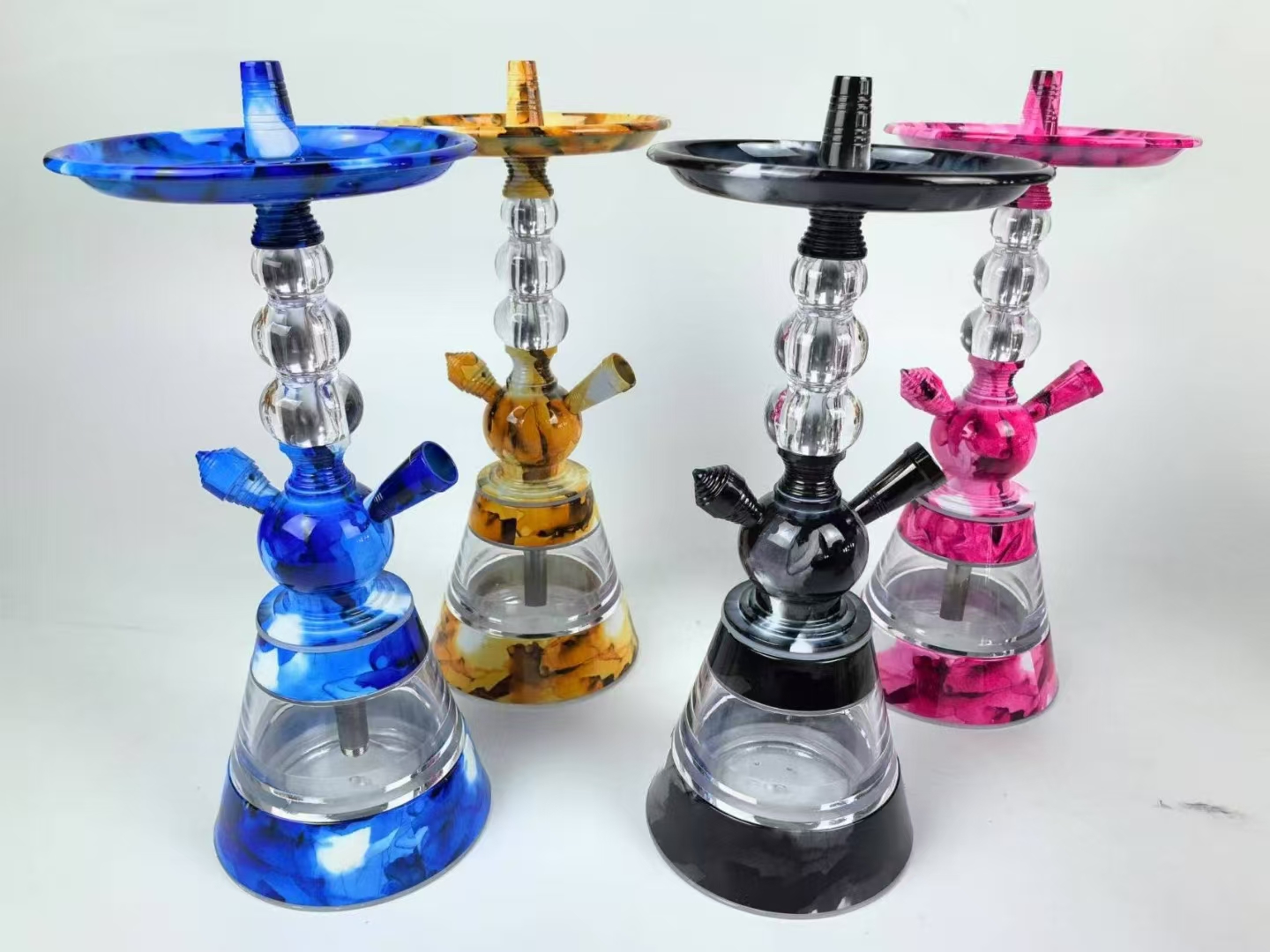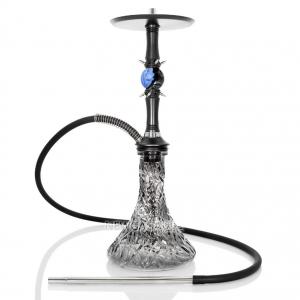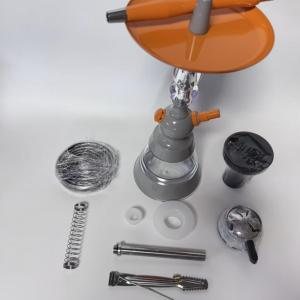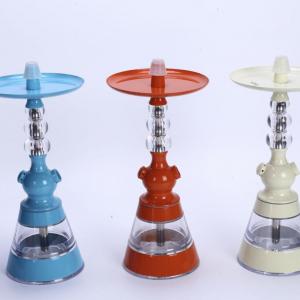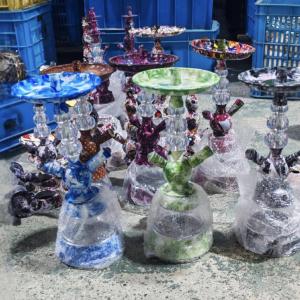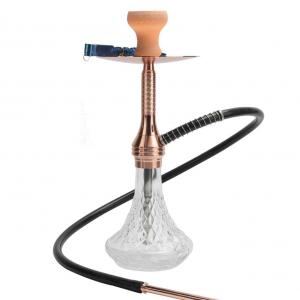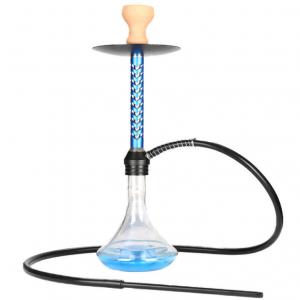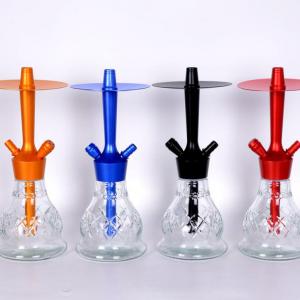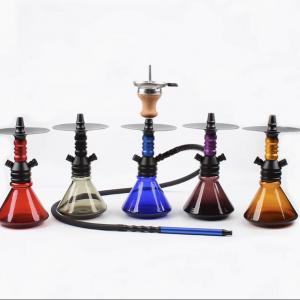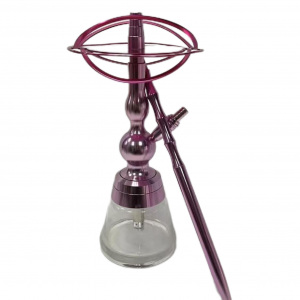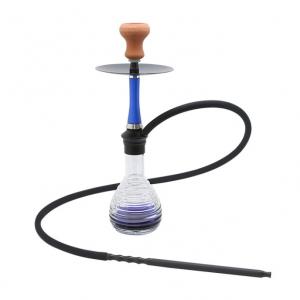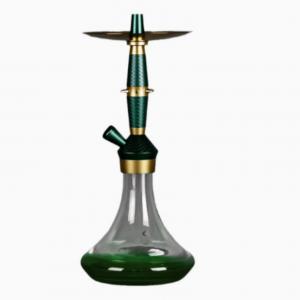Characteristics of Aluminum Alloy Hookahs: A Focus on Material Properties
Aluminum alloy hookahs are noted for their unique material properties, offering a balance of practicality and affordability, making them suitable for users who prioritize portability and versatility.
1. Lightweight and Portable, Suitable for Multiple Scenarios
- Low Density, Light Weight: Aluminum alloy has a density about one-third that of stainless steel, resulting in a significantly lighter overall weight and easier portability, especially for outdoor activities or situations requiring frequent movement.
- Easy to Process and Shape: It can be manufactured into complex structures through extrusion, rolling, and other processes, allowing for integrated design of the hookah body and components, enhancing portability.
2. Excellent Thermal Conductivity, High Heating Efficiency
- Rapid Heat Transfer: Aluminum alloy has a thermal conductivity 2-3 times that of stainless steel, resulting in faster heating, ideal for scenarios requiring quick temperature increases (e.g., adding flavors or rapid smoke production).
- Uniform Heat Dissipation: The hookah body surface can quickly and evenly transfer heat, reducing the risk of localized overheating.
3. Stable Surface Treatment, Moderate Durability
- Oxide Layer Protection: The surface undergoes anodizing treatment to form a dense aluminum oxide layer, which is corrosion-resistant and wear-resistant, making it less prone to rust during daily use.
- Service Life: With normal use, it can last for 2-3 years, shorter than stainless steel (7-8 years) but more cost-effective.
4. Outstanding Cost-Effectiveness, Economical and Practical
- Low Material Cost: Aluminum alloy is significantly cheaper than stainless steel or copper, making it suitable for budget-conscious users.
- Low Processing Cost: Easy for mass production, with high efficiency in mold forming, reducing manufacturing costs.
5. Strong Functional Expandability
- Detachable Design: Aluminum alloy components can be forged or cast to achieve a modular design, facilitating cleaning and maintenance (e.g., adding filter liquid or removing smoke residue).
- Compatible with Multiple Accessories: Its lightweight nature supports additional functions (e.g., portable hose, adjustable body).
6. Environmentally Friendly and Recyclable
- Low Melting Point, Easy Recycling: Aluminum alloy scrap can be remelted and regenerated through simple processes, aligning with eco-friendly principles.
Comparison with Other Materials: Core Advantages
| Material | Aluminum Alloy | Stainless Steel | Copper | Iron/Zinc Alloy |
|---|---|---|---|---|
| Weight | Light (portable) | Heavier | Heavy | Light (but prone to deformation) |
| Thermal Conductivity | Excellent | Average | Poor | Poor |
| Durability | 2-3 years (oxide layer protection) | 7-8 years (corrosion-resistant) | Prone to oxidation, thin and fragile | Prone to rust, short lifespan |
| Price | Low | High | Very high | Low (but poor cost-effectiveness) |
| Applicable Scenarios | Portable, daily home use | High-end durability requirements | Decorative purposes (requires regular maintenance) | Temporary or infrequent use |
Conclusion
Aluminum alloy hookahs excel in lightweight design, efficient thermal conductivity, and cost-effectiveness, making them particularly suitable for users seeking affordability and portability. For long-term use or extreme environments (e.g., high temperatures, high corrosion), stainless steel may be considered. For decorative purposes, copper hookahs offer greater aesthetic value but require regular maintenance.
